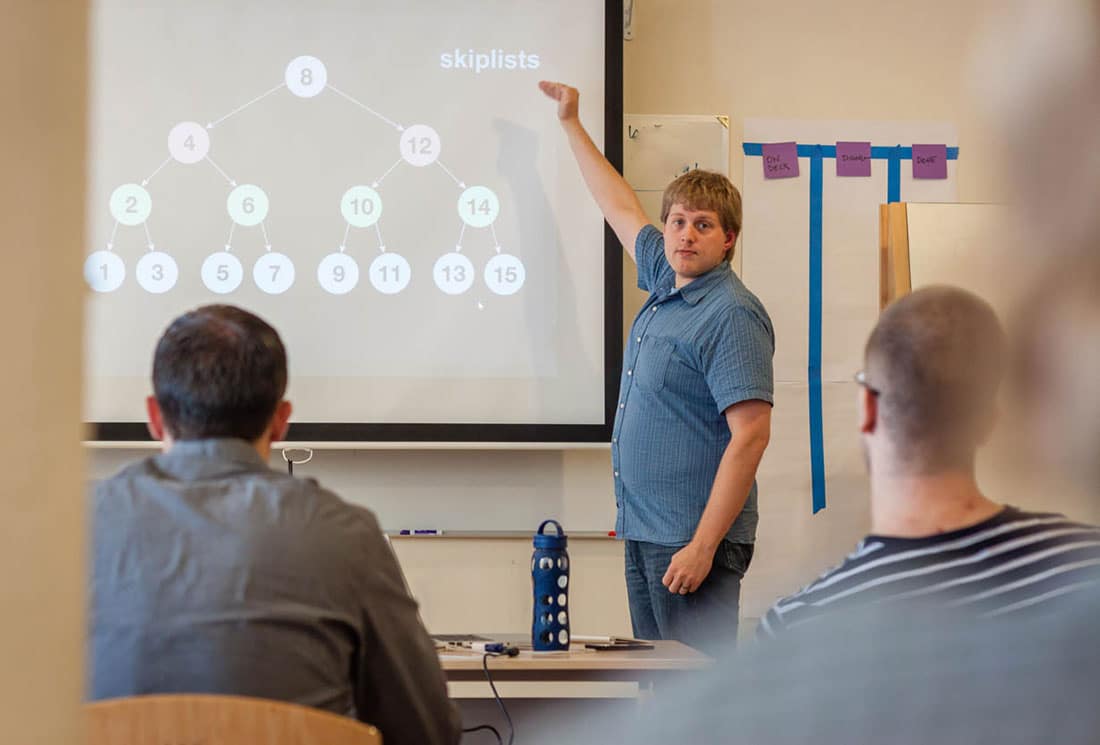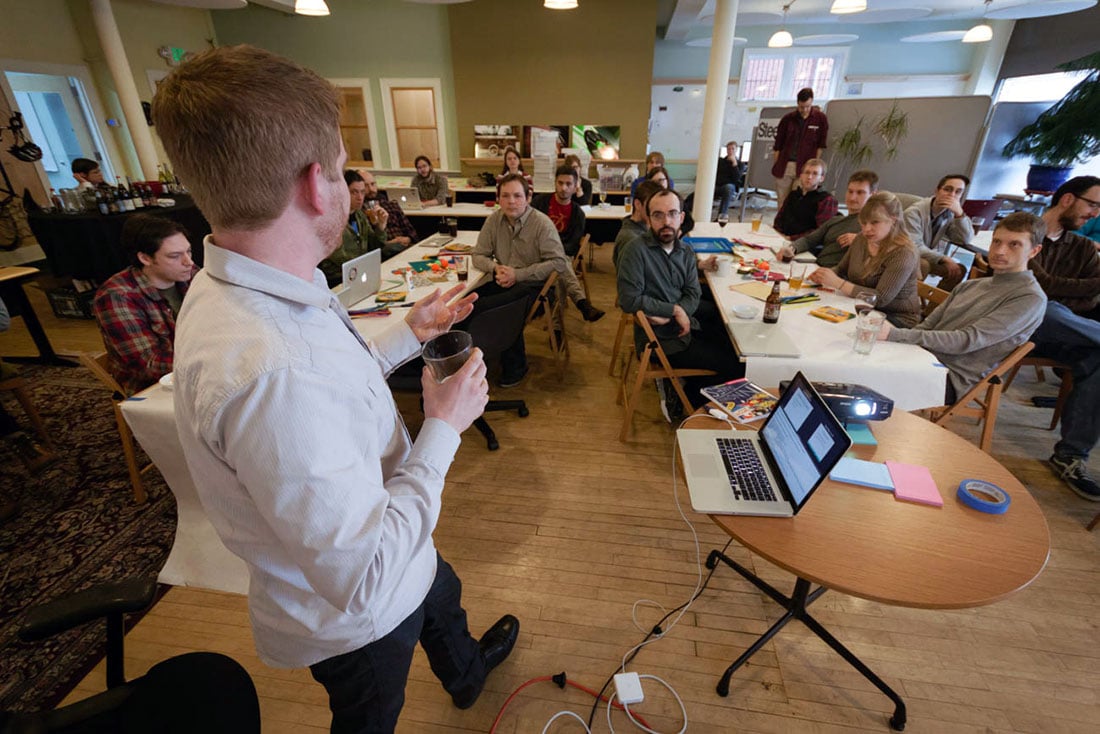In the ever-changing world of software, you’re never done learning new things. Atoms want to make great software, so need to stay at the top of our game. That’s why Teach and Learn is one of our five values.
I asked atoms, “What does Teach and Learn mean to you?” Here’s what they told me.

1. Cross-Pollination – We’re Smarter Together
At Atomic, we call our combined knowledge the “Atomic Brain Trust.” Clients benefit from the knowledge of the entire “Brain Trust,” not just the Atoms on their team.
Each client gets benefits from previous project lessons, regardless of who’s on the team. The whole team is able to take responsibility for any part of the client’s work because we share what we learn as we tackle each problem.
– Karlin Fox
Clients have the input of 40 highly-skilled consultants contributing to their project, not just the 2 or 4 Atoms assigned to that product team.
– Brittany Hunter
We have to stay relevant so we can know which tools and techniques to apply to projects. We cross-pollinate industries, clients, and technologies.
– Carl Erickson
How does this happen? Atoms are constantly teaching each other and learning from each other.
We teach each other when we help each other solve problems. Often I find that when I am stuck on something and talking out loud about it, someone will walk across the room and offer advice. That is a really awesome thing.
– Jordan Schaenzle
If you know a better way, bring it up to your team so everyone learns. By spreading knowledge, the entire brain trust is better off and able to handle a wider spread of problems. It raises the overall bar at AO.
– Shawn Anderson

This habit of teaching and learning makes us fast learners:
We are used to picking up new tools and languages, so whatever the client’s needs are, we are probably better prepared to get up to speed than most. We also tend to have a lot of experience with different technology stacks and can perhaps suggest approaches that might be a better fit than what they had in mind.
– Jesse Hill
Projects always benefit from more rounded developers. In particular, things I’ve learned about Ruby and patterns used in non-embedded projects have strongly influenced my approach when developing embedded software. Likewise, when I contribute to web or mobile projects, my embedded experience gets passed to others who can then put that knowledge to work.
– John Van Enk
2. A Humble, Generous Attitude
Of course, teaching and learning is about more than what you do. It’s about how you do it.
A lot of it is about having a humble attitude, and that goes both ways—being teachable and ready to learn from your colleagues, but also having a humble attitude as a teacher, not looking to belittle or knock people down your colleagues. It shouldn’t be a contest of who knows more or who knows better, it should be a partnership that results in everybody’s growth and a great product.
– Brittany Hunter
Teach and learn means allowing interruptions when someone comes to you with a question. And it means giving time to teach other teammates new skills during events like Brown Bag lunches, company metings, etc.
– Julia Jamieson
Being willing to teach means we’re willing to pass along our knowledge (rather than using it as a competitive edge inside the company). Being willing to learn means acknowledging that our peers know things we don’t. It’s not a mark against us, rather an acceptance of a reality.
– John Van Enk

3. Teaching & Learning from Clients
We also strive to be humble learners and teachers with our clients.
We learn from our clients so that we can better tailor our solutions to their specific situation, and we teach them how and why we do what we do. For example, when I was helping one of our customers fix a problem, I worked with him remotely so that he could absorb some knowledge and learn from the experience rather than me just fixing the problem on my own. (Which would have been faster, but not been as helpful in the long-run.)
– Justin Kulesza
While doing sales, I learn a lot about our clients’ business domain, problems, and opportunities. I also teach them how Atomic could help them. Often, sales calls turn into free consulting that helps give potential clients perspective.
– Shawn Crowley
Six Words
I also asked everyone to summarize “Teach and Learn” in just six words. These are my favorite answers.
- Curious, open, humble and sharing freely. – Shawn Crowley
- Taking time to help and listen. – Jamie Lystra
- Never stop learning; always be sharing. – Carl Erickson
- Building each other; building better software. – Jared Sartin
- Skill sharing, drawing on collective experience. – Scott Vokes

This is the third post in a series on Atomic’s values, described by the Atoms themselves.
